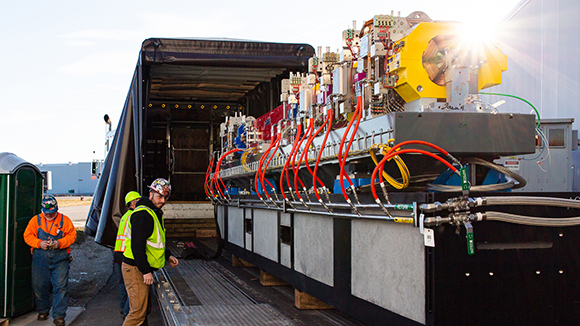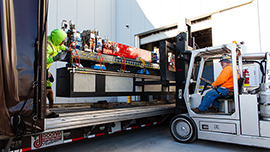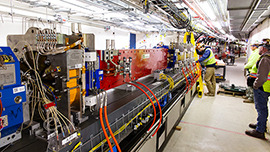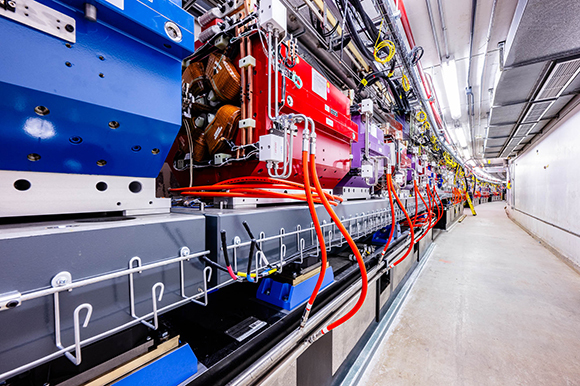Welcome to 2024: Charting the year ahead
Is it just me, or has this been the best month of the year so far? (I know, I know.) Despite a dose of Illinois winter, we’re off to a good start, and I hope the year has started well for you, too.
In 2024, our to-do list looks like this: Finish testing and checking out the brand-new electron storage ring at the heart of the upgraded Advanced Photon Source (APS), circulate electrons in that storage ring, bring up beamlines into operation and welcome users back to the new facility.
Daniel Burnham encouraged all to “Make no little plans.” The renewal of the APS facility certainly isn’t little, and we hope the future performance stirs all our imaginations with its possibilities.
It’s been a thrill to watch this team work over the past few years. Case in point: Just before the holiday break, we scratched the last item off of our 2023 to-do list when we installed the final modules of the new APS storage ring. All 200 modules are now in the tunnel, a tremendous achievement that took hundreds of people and countless hours of work.





I have to say that seeing the entire storage ring in place just never gets old. Here, see for yourself.
The next step is testing and checking out all the systems around the ring to prepare for a series of reviews that will precede turning the new machine on for the first time. We’ve restarted the booster accelerator, which feeds electrons into the storage ring, after a readiness review we conducted last month. The APS accelerator complex is slowly waking up.
Work is steadily progressing on the new feature beamlines and the enhancements to existing beamlines. This month we’re constructing new shielded enclosures at three of the experiment stations, installing monochromators at several more, putting components in place and connecting cables. One of the major achievements of the month was the delivery and installation of the Ultra-Small Angle X-Ray Scattering (USAXS) flight tube at 12-ID. Some pictures from early in the process are below, and we’ll have more for you next month.


With all of this work progressing, we’re not too far away from restarting the general user program at the upgraded APS. The first call for proposals, for experiments on the new feature beamlines, has already gone out, and the first general user call is scheduled for next month. It’s important to note, however, that putting the beamlines through commissioning and returning them to user operations is an extensive process, so it will take some time before first experiments can start. An outline of that process can be seen here.
While some of the beamlines will be available early on, the majority of them will transition to scientific commissioning sometime this summer and fall. Jonathan Lang, director of the X-ray Science division at the APS, walked through the methodology and timing for beamline restarts in our most recent APS Upgrade Q&A for users, held last month. The slide deck for that talk is available online, with the caveat that the schedules included are drafts and could change.
On behalf of the entire team here at Argonne, we’re excited to welcome users to the upgraded APS later this year. As always, the most up-to-date information about the APS Upgrade will be posted on the website. Happy new year, everyone. More exciting news next month. Until then, be safe.
Jim Kerby
Director, APS Upgrade Project
